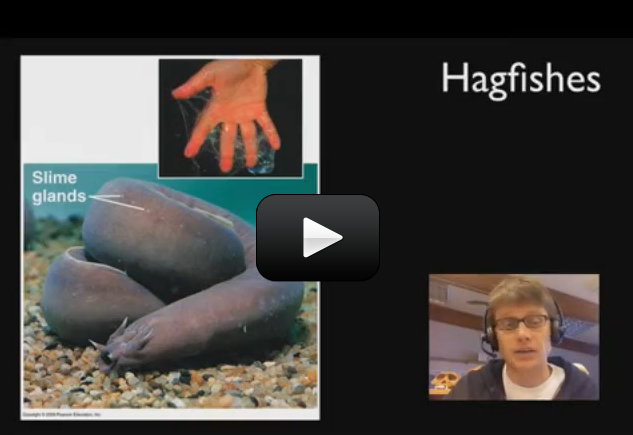There are 57,739 species of vertebrates. The majority of these vertebrates can be classified as fish. This includes jawless species of fish and cartilaginous fishes. (Those are fish with skeletons made of cartilage, the same material that makes up your nose.)
Fish are almost always ectothermic. This means that the body temperature of fish changes based on the outside temperature. This is different than other animals (including humans) who keep a constant body temperature no matter the temperature outside.
Additionally, fish generally lay eggs, have two paired fins, and have scales. Finally, fish typically have gills which allow them to get oxygen from water, allowing them to breathe while in their underwater habitat.
There are plenty of exceptions to these general characteristics of fish. Tuna, for example, have the ability to warm their bodies so that their body temperature is warmer than the cool water in which they live. Moray eels do not have scales. As you will read in the next section, not all fish have paired fins. Even what seems to be the most “fish-like” characteristic of all, living in water, is not something that all fish have in common.
Mudskippers are fish that spend a considerable amount of time on land, living for several days at a time on mudflats, where they absorb oxygen through their skin in order to breathe.
The group agnatha, also known as the jawless fish, make up one group of fishes. There are about 100 species of jawless fish, which can be placed into one of two groups – the lampreys and the hagfish. Interestingly, although these fish do belong to the vertebrate subphylum, they do not technically have vertebrae. In fact, this group of fish is so different than fish with jaws, it has led some scientists to wonder if they should be called “fish” at all.
Along with their lack of jaws, the jawless fish are notably different than other fish because they do not have paired fins. Agnatha do not have an identifiable stomach, and don’t have a true eye, instead having a light-sensitive eye-like structure. These fish have bodies made of cartilage and have a heart with only two chambers as opposed to the normal four.
Hagfish also produce a slimy substance which has led some people to call them “slime eels,” although they are not eels at all. The Pacific Hagfish is one example of a jawless fish.


Yes, thank you!
– Ana
Hagfish can feed upon and often even enter the bodies of dead and dying/injured sea creatures much larger than themselves. They are known to devour their prey from the inside. Is that what you mean by parasites of the ocean?
Are hagfish considered parasites to the ocean? What do they eat most often, other than dead animals?
I would have stopped picking up and squeezing those Hagfishes long ago…. I can’t believe that fisherman just kept grabbing them!
It’s actually a very distinct, special material. It doesn’t dry out like normal slime or gel would, and it has thread-like proteins that make it very strong. Scientists are studying it now to find out more about its composition and potential uses.
Is the slime like slime you make at home or like a gel substance?
weird
That is weird but so cool!
From Briar.
Most of the known predators of hagfish are varieties of birds or mammals. What’s surprising is that they don’t have a lot of predators in the ocean. It has been proposed that the lack of marine predators can be explained by a “gill-clogging hypothesis.” Under this hypothesis, one of the functions of the slime produced by hagfish would be to destroy the gill function of potential predators. If this is true, it would be a pretty impressive ability to an animal a lot of people regard as “primitive.”
I was wondering what eats these Hagfish then? I mean what are their natural predators?